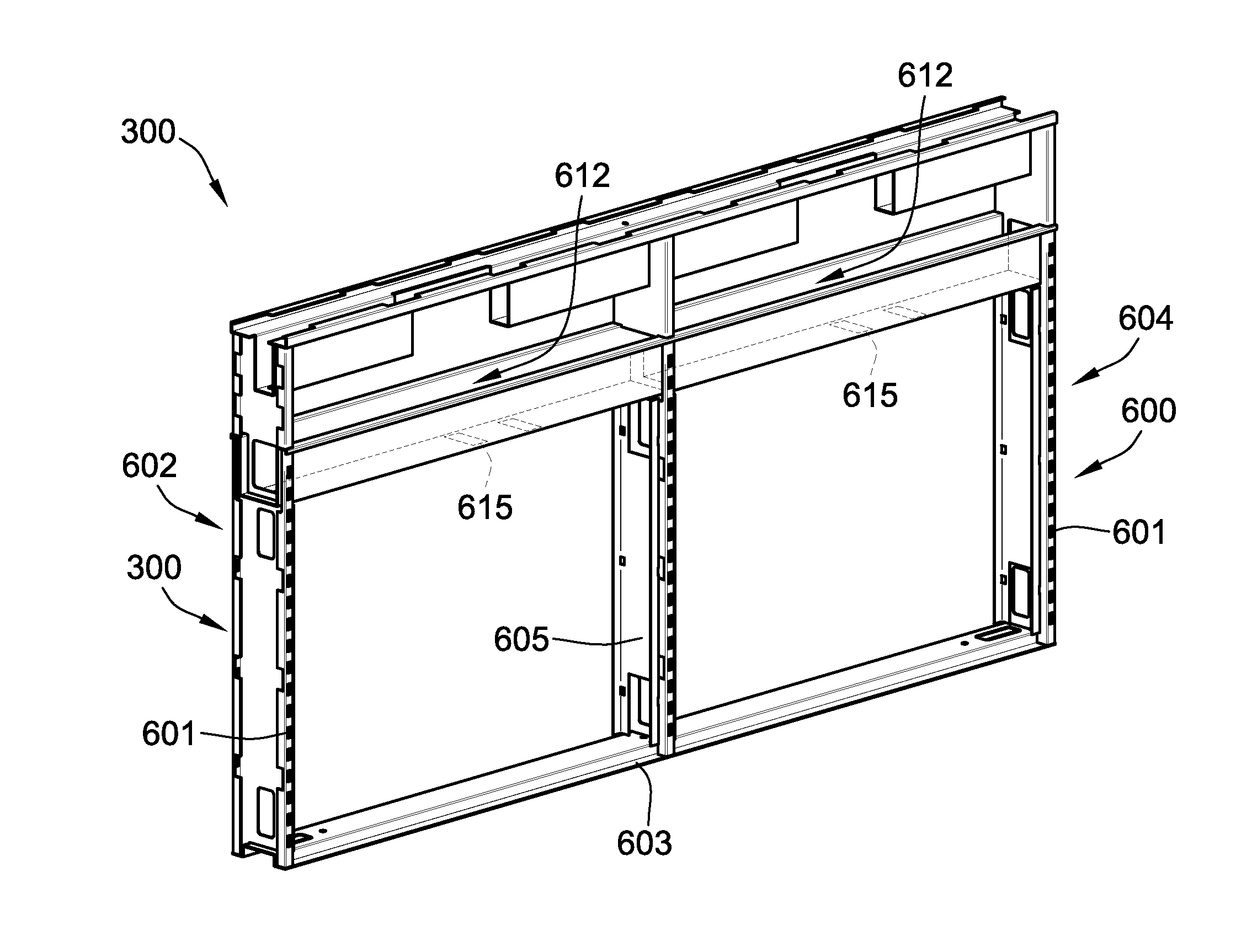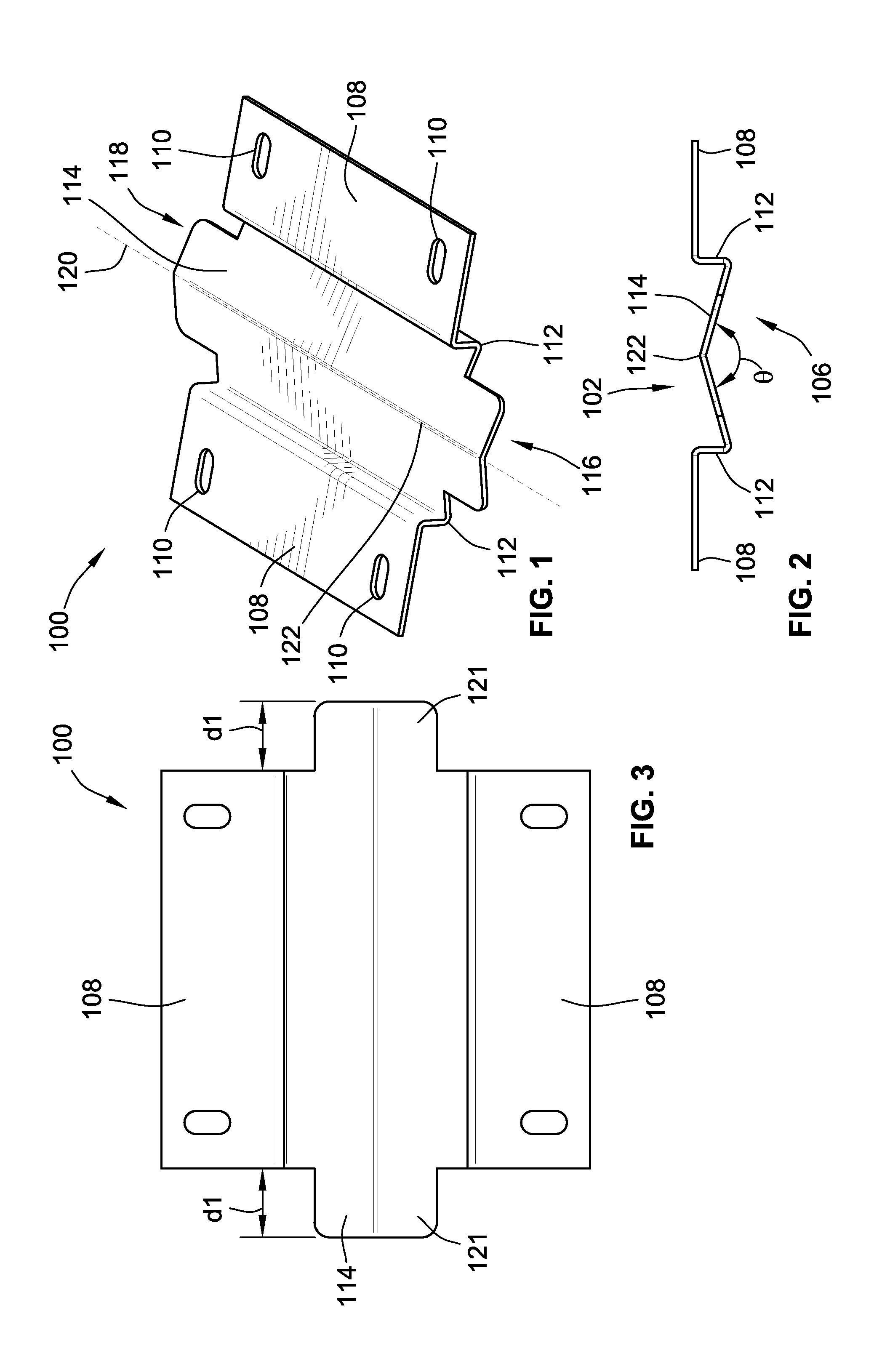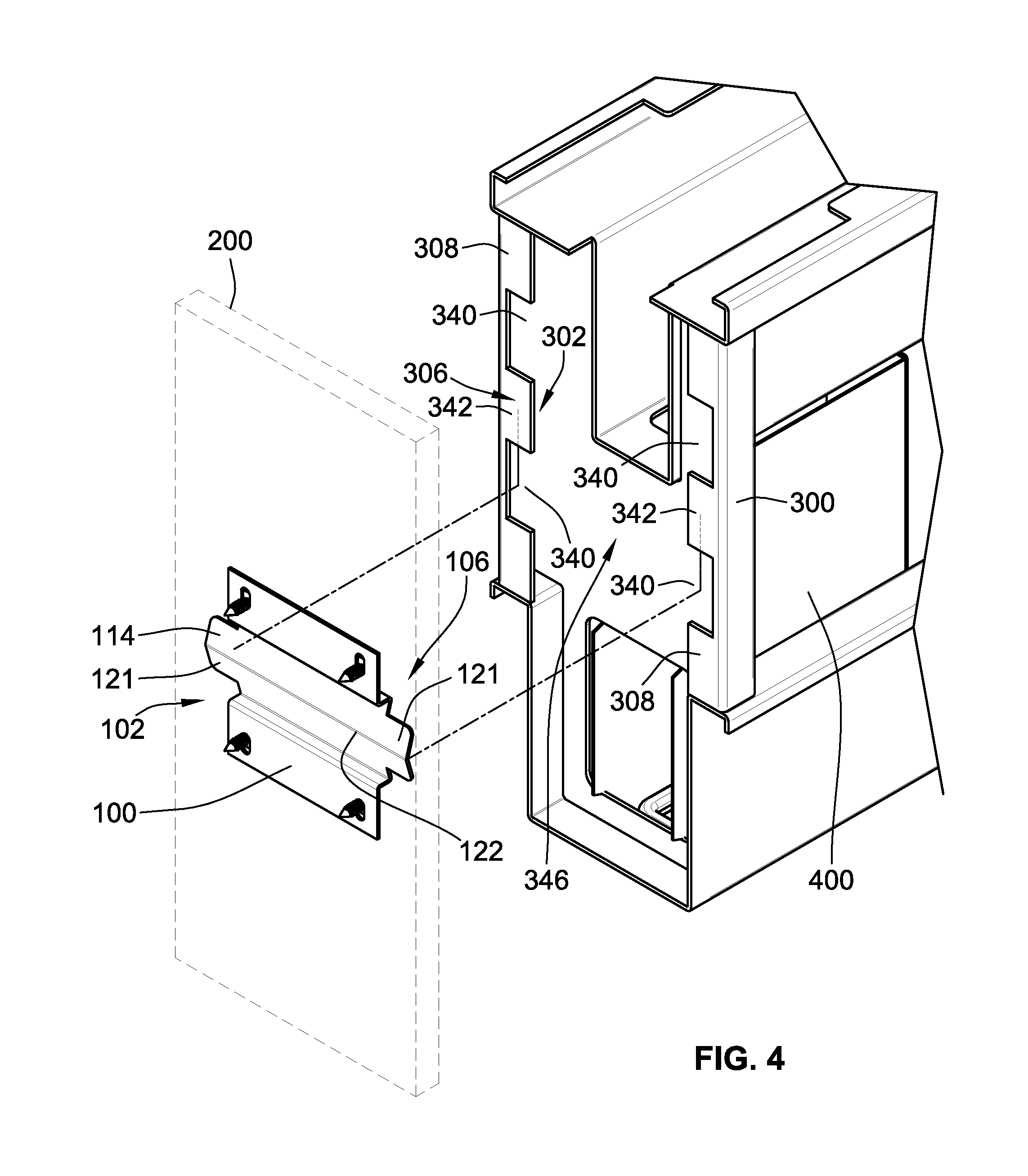Beltway system for a modular furniture assembly
a furniture and modular technology, applied in the direction of furniture parts, machine supports, dismountable cabinets, etc., can solve the problems of screw bending and damage to the floor, affecting the assembly and disassembly of furniture items, and affecting the appearance of furniture items
- Summary
- Abstract
- Description
- Claims
- Application Information
AI Technical Summary
Benefits of technology
Problems solved by technology
Method used
Image
Examples
Embodiment Construction
[0028]While this invention is susceptible of embodiment in many different forms, there is shown in the drawings and will herein be described in detail preferred embodiments of the invention with the understanding that the present disclosure is to be considered as an exemplification of the principles of the invention and is not intended to limit the broad aspect of the invention to the embodiments illustrated.
[0029]FIG. 1 is a perspective view of a bracket 100 according to the present invention. The bracket 100 includes a first side 102 facing a first item of furniture 200 and a second side 106 which faces a frame 300 in a disassembled (unstressed) state as shown in FIG. 4. The bracket 100 includes two side wings or extensions 108 that are coupled (such as by fasteners) to the first item of furniture 200. Each one of the side extensions 108 includes a plurality of apertures or openings 110 formed therethrough configured to receive fasteners such as screws, bolts, nails, glue, or othe...
PUM
| Property | Measurement | Unit |
|---|---|---|
| angle | aaaaa | aaaaa |
| angle | aaaaa | aaaaa |
| thickness | aaaaa | aaaaa |
Abstract
Description
Claims
Application Information
 Login to View More
Login to View More - R&D
- Intellectual Property
- Life Sciences
- Materials
- Tech Scout
- Unparalleled Data Quality
- Higher Quality Content
- 60% Fewer Hallucinations
Browse by: Latest US Patents, China's latest patents, Technical Efficacy Thesaurus, Application Domain, Technology Topic, Popular Technical Reports.
© 2025 PatSnap. All rights reserved.Legal|Privacy policy|Modern Slavery Act Transparency Statement|Sitemap|About US| Contact US: help@patsnap.com



